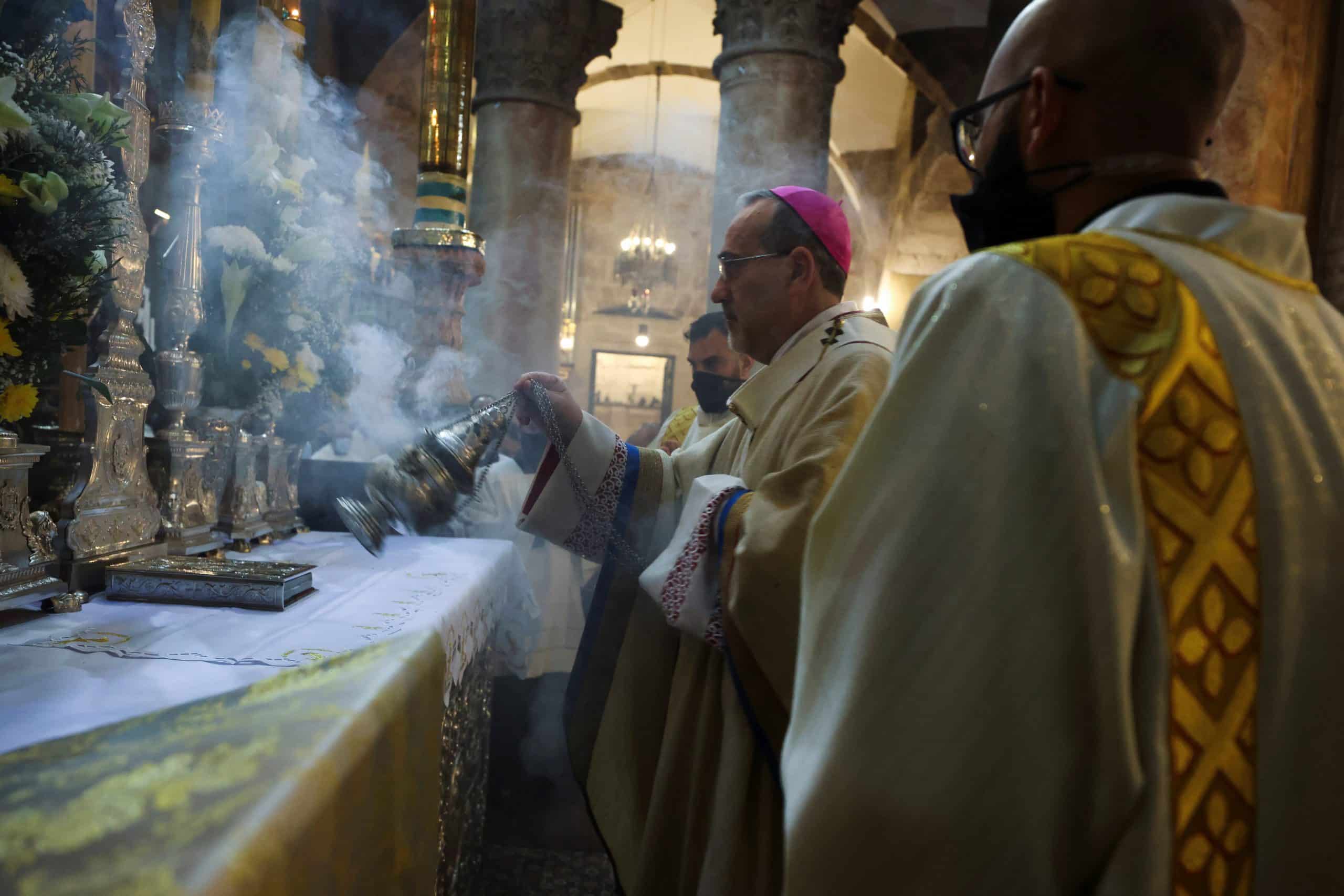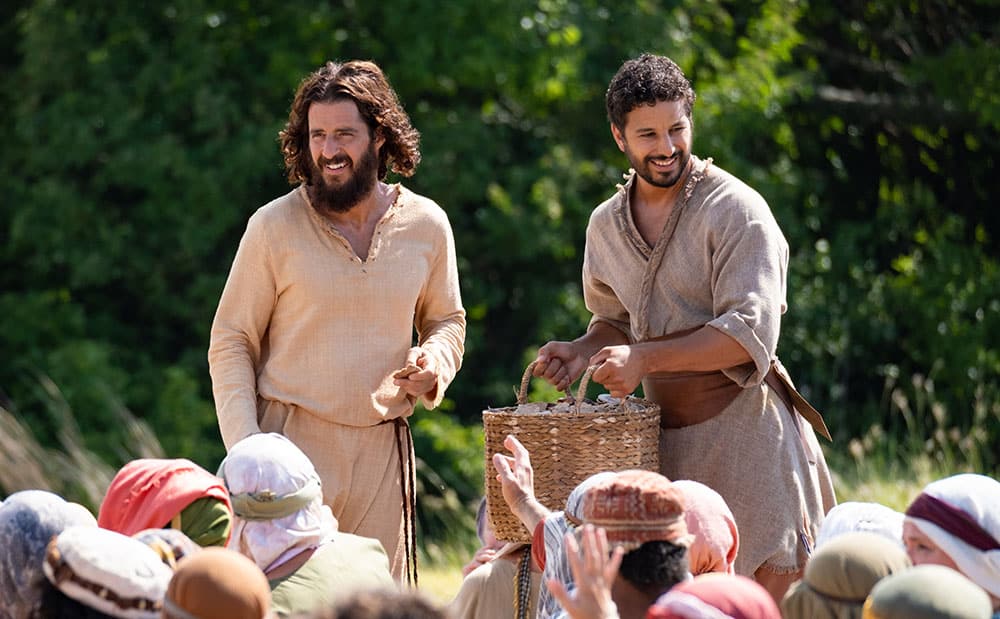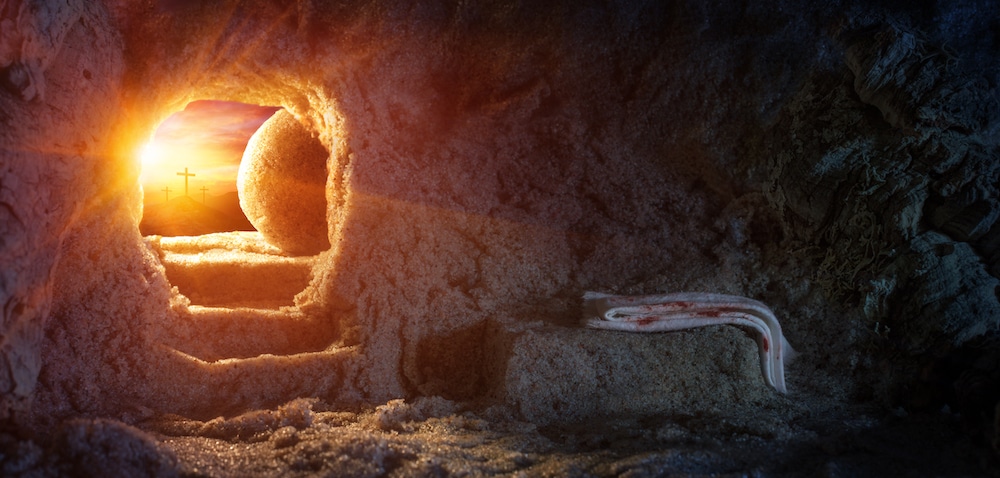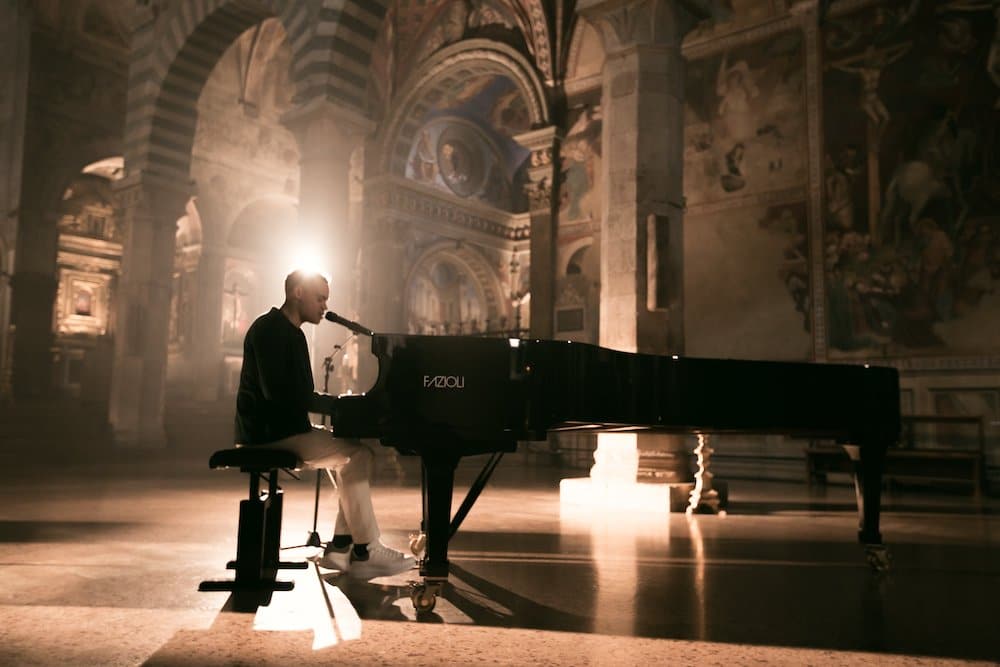Is the Eucharist alive in your life? If not, would you like it to be? The celebrations of the sacred Paschal Triduum are a great place to start.
Catholics in the United States find themselves in the midst of a three-year period of Eucharistic revival. Our bishops describe this time as a “grassroots revival of devotion and belief in the Real Presence of Jesus in the Eucharist. They believe that God wants to see a movement of Catholics across the United States, healed, converted, formed and unified by an encounter with Jesus in the Eucharist — and sent out in mission ‘for the life of the world.'”
The bishops’ motivation is manifold: post-pandemic declines in Mass attendance, the wounds inflicted by contemporary culture in need of healing, and even statistical data from the Pew Research Center that found a mere 31% of Catholics polled believe in the Real Presence of Jesus in the Eucharist. While there may be much to debate concerning Church life today, all would have to agree with our bishops on this score — namely, that Catholic life in the home, in the parish and in the culture needs a boost.
In the face of general low-level Eucharistic living, though, solutions have differed. One common response — and an effective one — wants to teach and preach the reality of the Blessed Sacrament more clearly and convincingly. Jesus’ Paschal sacrifice is made really, truly present before our praying eyes on the altar at every Mass. And even after Mass, his body, blood, soul and divinity remain in our midst in the tabernacle. Catechesis — in CCD classes, Catholic schools, RCIA sessions and Catholic literature — must recover these truths and relay them more powerfully than has been done in the recent past.
Some in the Church, though, are quick to observe that, while teaching sound doctrine is a key element to the revival, our focus might more fruitfully be placed on the actual celebration of the Eucharist. For one, all Mass-going Catholics can see for themselves just what the Church (her ministers and faithful) believe about the Eucharist. Relatively few Catholics, on the other hand, attend catechism classes or consume Catholic media (Our Sunday Visitor readers notwithstanding). The Mass’s celebration, in other words, has the greatest reach to the greatest number of Catholics. Relatedly, the Mass has the capacity to teach most powerfully. Pope Benedict XVI remarked that “the best catechesis on the Eucharist is the Eucharist itself, celebrated well” (Sacramentum Caritatis, No. 64). In this way, the parish church emerges as the greatest “classroom” concerning the Blessed Sacrament.
In the end, both sound catechesis and sacred liturgy (among other things) will be necessary tools for a Eucharistic revival. But to the degree that prayer grounds and grows the Faith (Did your mother show you how to make the Sign of the Cross first, or did she explain its doctrine first?), the Mass will prove foundational. And of all Masses and liturgies, those of Holy Week and the Paschal Triduum are among the most privileged, illuminating and powerful to spark a Eucharistic revival in our lives.
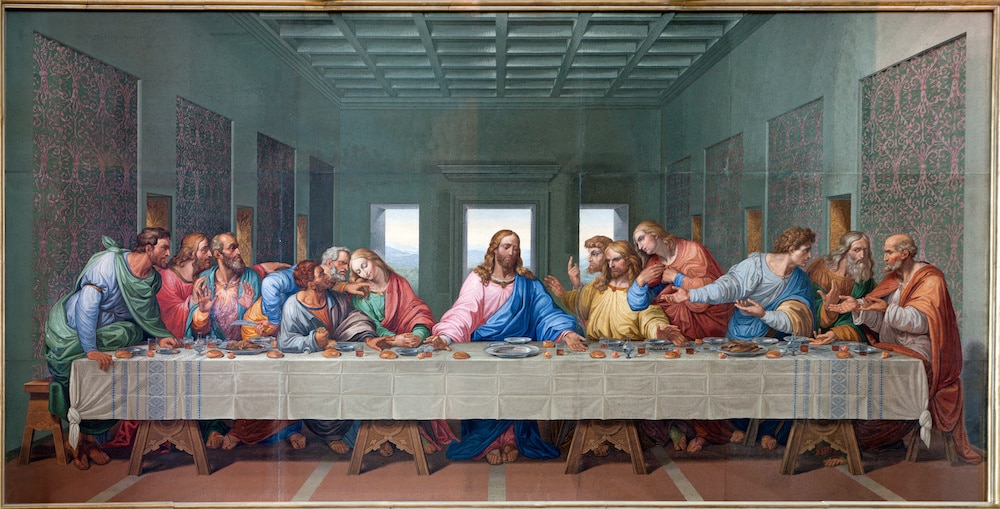
Thursday of the Lord’s Supper
The Paschal Triduum begins with the Mass of the Lord’s Supper on Holy Thursday. “Paschal” derives from the Hebrew word pascha, to “pass over” or “pass through.” “Triduum” means “three days,” or at least 72 hours — from the evening Mass of the Lord’s Supper to vespers on Easter Sunday. Together, the Paschal Triduum’s liturgies present the three days of Jesus’ salvific work of reconnecting — or bridging — heaven and earth so that we, the baptized, might pass over to heaven with him.
The work of bridge-building is pontifical; and a pontifex is one who builds a bridge. A priest in ancient Rome was called a “pontifex” since he stood in the breach that separated gods from men and attempted to effect a reconciliation between them. But these priests (like many other pre-Christian priests) were only shadows and anticipations of the Pontifex Maximus — Christ — that greatest of all bridge builders to come. Holy Thursday commences Jesus’ great bridge-building project.
Normally, the Chrism Mass is celebrated in dioceses around the world on this day. In addition to blessing the holy oils and consecrating the sacred chrism, this Mass gathers priests — both ordained and baptized — around the high priest par excellence, the diocesan bishop. Following his homily, the bishop asks all of the faithful to pray for their priests, but not before these men renew their own priestly promises. He invites them to do so in these words: “Beloved sons, on the anniversary of that day when Christ our Lord conferred his priesthood on his apostles and on us ….” Holy Thursday, as his words indicate, is an anniversary of the priesthood, for on this day in the Upper Room, the priesthood of the New Covenant — that of Jesus and of his apostles — was actualized.
The body of Christ that is the sacrament gives life to the Body of Christ, which is also the Church.
But, if the priesthood is born on Holy Thursday, so is its “twin” — the Eucharist. Also called the natalis calicis, “birthday of the chalice,” Holy Thursday supplies the material that priests need in order to build bridges: the offering, oblation or sacrifice. Priests need sacrifices — and sacrifices need priests: You can’t have one without the other. The first reading from the Mass of the Lord’s Supper recounts God’s instructions to Moses and the Israelites about that first Passover offering: Unleavened bread is eaten along with a year-old, unblemished lamb whose blood, marking the houses, ransoms their firstborn sons. Each ancient detail finds fulfillment in Christ: the true Bread from heaven, the Lamb of God, the Father’s only begotten Son. When the Church celebrates Mass today — when it obeys Christ’s command to “do this in memory of me” — that same Son, the Lamb, lives under the appearances of bread and wine.
| HOLY THURSDAY |
|---|
| Careful attention should be given to the mysteries that are commemorated in this Mass: the institution of the Eucharist, the institution of the priesthood, and Christ’s command of brotherly love; the homily should explain these points. (Paschalis Sollemnitatis, No. 45). |
The Church offers us another Eucharistic insight about the sacrifice during its preparation of the gifts and altar at this evening Mass. First, in one of the only occasions when the Missal names (and prints) a particular song for the offertory procession, the Church puts on our singing lips the Ubi caritas: “Where charity and love prevail.” The verses of this eighth-century hymn sing of the unity in love that should characterize Christian believers: “let us strive to keep our minds free of division; may there be an end to malice, strife and quarrels, and let Christ our God be dwelling here among us.” Our offering, then, is not merely to supply material for the Eucharistic Body of Christ, but it is meant to unify “in charity and love” the mystical Body of Christ. To emphasize the connection between Eucharist and Church, the offertory procession on this night allows “gifts for the poor [to] be presented with the bread and wine” (Mass of the Lord’s Supper). What’s more, on this “birthday of the chalice,” the Church suggests that “during Communion, the priest entrusts the Eucharist from the table of the altar to deacons or acolytes or other extraordinary ministers, so that afterwards it may be brought to the sick who are to receive holy Communion at home” (Mass of the Lord’s Supper). In short, the body of Christ that is the sacrament gives life to the Body of Christ, which is also the Church.
What, then, does Holy Thursday teach us — and form within us — about the Blessed Sacrament? That the Eucharistic mystery gives life and purpose not only to the priesthood but to the entire Church and its members.
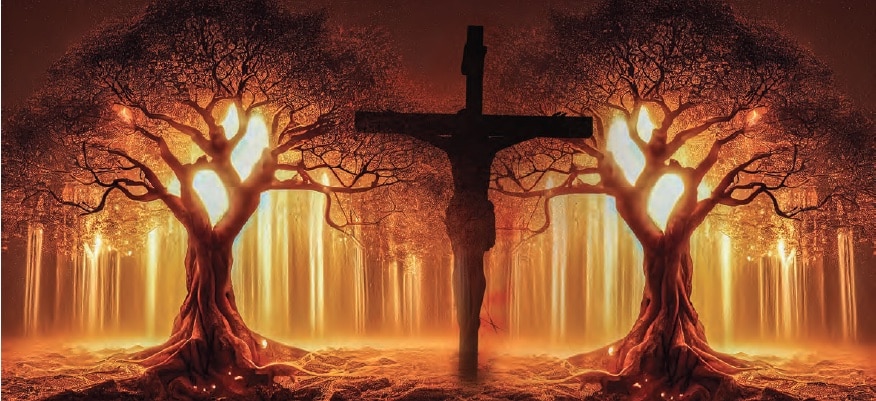
Friday of the Passion of the Lord
Good Friday also teaches Eucharistic lessons, albeit in a different way than Holy Thursday’s Mass of the Lord’s Supper — or any other Mass. In fact, there is no Mass at all to be found on Good Friday but, rather, a liturgy commemorating his passion and cross.
When we consider Christ’s cross as a tree, as the tradition does, then Eucharistic truths will bear fruit in our souls. In some fashion, the entire history of salvation tells a story of trees. In the beginning, at the center of Eden’s garden, stood a “tree of life” from which our first parents were welcome to eat from at their pleasure and, by it, come into closer union with God’s own divine life. At the end of time, in heaven, the Lord promises that he will give “the victor” the “right to eat from the tree of life that is in the garden of God” (Rv 2:7). Standing between these two “trees of life” rises the adorable Cross of Christ, arms extended back to the beginning and forward to the end, embracing all things beneath its boughs.
“The fruit of this tree is not death but life, not darkness but light. This tree does not cast us out of paradise, but opens the way for our return. … A tree once caused our death, but now a tree brings life.”
Part of the beauty of Good Friday’s Tree of Life is found in its fruit. Jesus himself says as much: Every tree is known by its fruit (cf. Lk 6:44). The saints found much food for thought in such an image. The eighth-century monk St. Theodore the Studite observes, “The fruit of this tree is not death but life, not darkness but light. This tree does not cast us out of paradise, but opens the way for our return. … A tree once caused our death, but now a tree brings life. Once deceived by a tree, we have now repelled the cunning serpent by a tree. What an astonishing transformation!” (Office of Readings for Friday of the Second Week of Easter). The cross of Christ, the true Tree of Life, reverses the world’s downward spiral unto death and redirects it to the heights of heaven.
| GOOD FRIDAY |
|---|
| On this day, when “Christ our passover was sacrificed,” the Church meditates on the passion of her Lord and Spouse, adores the cross, commemorates her origin from the side of Christ asleep on the cross, and intercedes for the salvation of the whole world. (Paschalis Sollemnitatis, No. 58). |
St. Albert the Great would say much the same in the 13th century: Christ “could not have commanded anything more beneficial, for [the Eucharist] is the fruit of the tree of life. Anyone who receives this sacrament with the devotion of sincere faith will never taste death” (Office of Readings for Nov. 15, St. Albert’s feast day). Ever since he first tasted the forbidden fruit, man has had a kind of supernatural eating disorder. Part of his healing will be a spiritual diet of supernatural substance: the body and blood of Christ, served up for us on the cross. Good Friday makes this dimension of the Eucharistic mystery palatable for us.
The Easter Vigil in the Holy Night
Surely, there is no more remarkable celebration throughout the entire Church year than the Easter Vigil. The blackness of night, the magnificent illumination of the Easter fire, the grand procession into the Church are just a prelude to the poetry of the Exsultet and the long recounting of salvation history in the many readings. But these words, too, lead to the evening’s main event: the initiation of souls into the full communion of the Church.
For some, baptism will be the doorway through which they pass into Church; for others, a profession of faith and being confirmed by sacred chrism will mark their entry; for both, the first reception of the Eucharist will make their initiation complete.
| HOLY SATURDAY |
|---|
| On Holy Saturday, the Church is, as it were, at the Lord’s tomb, meditating on his passion and death and on his descent into hell, awaiting his resurrection with prayer and fasting. It is highly recommended that on this day, the Office of Readings and Morning Prayer be celebrated with the participation of the people. Where this cannot be done, there should be some celebration of the word of God or some act of devotion suited to the mystery celebrated this day. ((Paschalis Sollemnitatis, No. 73). |
We saw how Holy Thursday’s Mass of the Lord’s Supper included gifts for the poor along with the bread and wine for the Mass. While the instructions for the offertory procession at the Easter Vigil don’t speak of unique gifts, they do enlist the service of the Church’s newly baptized priests. “It is desirable,” the rubric says, “that the bread and wine be brought forward by the newly baptized or, if they are children, by their parents or godparents.” Part of the insight behind this ritual action was seen above: Priests — even among the baptized — offer sacrifices, and sacrifices are given to God through the consecrated hands of priests. But a potentially obscure figure mentioned in the First Eucharistic prayer — “Abel the Just” — gives us even greater awareness of what’s happening at this moment.
Cain and Abel, the sons of Adam and Eve, both offered gifts to God — Cain, the yield of his harvest, and Abel, a firstling from the flock (cf. Gn 4:4) — but only Abel’s was found acceptable. Why was this the case? We’ve seen before how God’s design favored the firstborn son as well as fruits of the springtime harvest — both of which Cain could claim. Yet there was something more meaningful in Abel’s offering — namely, his best.
| The Easter Vigil |
|---|
| According to a most ancient tradition, this night is “one of vigil for the Lord,” and the Vigil celebrated during it, to commemorate that holy night when the Lord rose from the dead, is regarded as the “mother of all holy vigils.” For in that night, the Church keeps vigil, waiting for the resurrection of the Lord, and celebrates the sacraments of Christian initiation. (Paschalis Sollemnitatis, No. 77) |
Abel is called “the just.” Justice is a virtue that renders another his due. When it comes to what we owe God, there is nothing we can offer to commensurate his greatness and for the good things he has given us — which is everything! “How can I repay the Lord for all the great good done for me?” the psalmist asks (116:12). Answer: We can’t. But we can give our best, because our best is what God deserves as a matter of justice. St. Cyprian explains: “When Cain and Abel first offered their sacrifices, God considered not so much the gifts as the spirit of the giver: God was pleased with Abel’s offering because he was pleased with his spirit. Thus, Abel the just man, the peacemaker, in his blameless sacrifice taught men that when they offer their gift at the altar they should approach as he did, in the fear of God, simplicity of heart, ruled by justice and peaceful harmony. Since this was the character of Abel’s offering, it was only right that he himself should afterward become a sacrifice” (Office of Readings for Friday of the 11th Week in Ordinary Time). Abel thus stands as a model for the neophyte’s first Mass as a Catholic receiving first Communion; Abel also lives on as a reminder to each of us who has been to Mass many times and already received our first Communion. At every Mass, we are called to give to God our best, in simplicity of heart, joining our entire selves to Christ in the Eucharistic sacrifice.
The Easter season
The goal of our current Eucharistic Revival is new life in Christ. This divine life blossoms forth in the world, today, and is not something we must wait to inherit after death: We don’t have to be dead to live! Pope Benedict XVI described this “revived” life as something much greater than mere existence. Rather, the Christian “has found and embraced the real life that everyone is seeking. … The early Christians called themselves simply ‘the living.’ They had found what all are seeking — life itself, full and, hence, indestructible life” (“Jesus of Nazareth: Holy Week”). “Get a life!” is a flippant remark these days. But in the Christian context, “getting a life” is more than simply getting along: It is a life charged with God himself.
The tradition calls such an exalted mode of being “divinization.” Certainly, we do not turn into gods; I will never be a fourth person of the Trinity! But we can receive Christ’s own life to such a degree that, as Blessed Columba Marmion (like St. Athanasius before him) puts it, we become “by grace what Jesus is by nature: the Son of God.” Such divinization was part of God’s plan “in the beginning.” God had destined us to be alive (vivre!) by living in his presence. Adam and Eve’s sin, in fact, was not that they wished to be “like God” — they had already been made in his likeness — but was wishing to become even more God-like “without God, before God, and not in accordance with God” (St. Maximus the Confessor, in the Catechism of the Catholic Church, No. 398). Having wished for the best of gifts — divinity — in a disordered and disobedient way, our first parents (and we, their children) were destined to die. Thus, God gave his only Son — the liturgical reality of the Paschal Triduum — to bring us to life again; that is, to revive us!
When rejecting the tree of life and eating disobediently caused our death, God gives us another chance to eat properly, humbly, of the fruit of the Tree of Life and be filled with divinity.
The paschal Christ gave divine life to mortal men when he lived among us 2,000 years ago, especially as he suffered and died upon the cross. (Can you imagine the effect of being literally, physically drenched in the blood and water pouring from his opened side, as may have happened to the lance-thrusting centurion?) This same Christ still showers his divine life upon us today, especially under the appearances of bread and wine. When we eat and drink with proper dispositions, we consume divine life — and its transformative power is nearly unbelievable.
The great bishop of Hippo, St. Augustine, heard Christ’s explanation of the sacrament’s power in these words: “I am the food of grown men; grow, and you shall feed upon me; nor shall you change me, like the food of your flesh, into yourself, but you shall be changed into me” (see Sacramentum Caritatis, No. 70). A near-contemporary of St. Augustine, Pope St. Leo the Great, says similarly that we are “filled and inebriated with the Lord himself. For the effect of our sharing in the body and blood of Christ is to change us into what we receive” (Office of Readings for Wednesday of the Second Week of Easter). God made us in his image and called us to grow more fully into his divine likeness. When rejecting the tree of life and eating disobediently caused our death, God gives us another chance to eat properly, humbly, of the fruit of the Tree of Life and be filled with divinity.
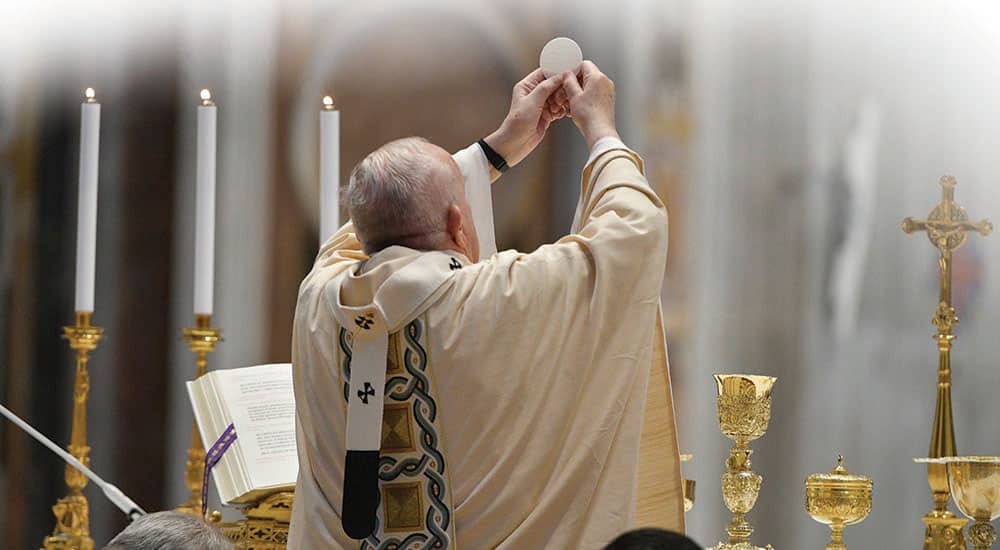
Get a life
Holy Week is the epicenter of the liturgical year, since Christ’s cross is the axis around which all ages turn. In the Upper Room on Holy Thursday, he anticipates the sacrifice of his body, given for the life of his bride, the Church, and places it into the hands of his priests. On the cross of Good Friday, Jesus transforms the tree of death into the Tree of Life, whose fruit feeds the faithful as they journey home to the restored garden of God. By receiving the Blessed Sacrament at the Easter Vigil on Holy Saturday, Christians new and old eat and drink God and are transfigured by the treasure of divine life this heavenly food contains.
The mystery of the Eucharist, especially as it comes to us during Holy Week, has a power unlike any other to bring us dead men and women back to life. “Those who receive [the Eucharist] with faith,” Pope Francis said, “are transformed into a living Eucharist” (general audience, March 21, 2018). May these three years of the Eucharistic Revival — and the three days at the end of Holy Week — be lively indeed for all of us.
Christopher Carstens is director of the Office for Sacred Worship in the Diocese of La Crosse, Wisconsin, and the author of “A Devotional Journey into the Easter Mystery” (Sophia, $18.95).

